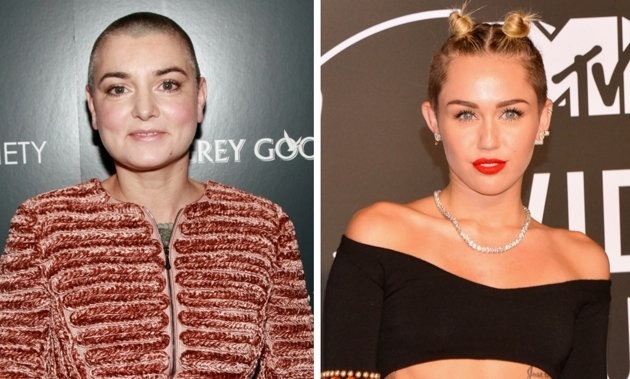As the “Sinead vs. Miley” feud trundles on, Áine O’Connell probes the issues behind the online spat, and asks whether the music industry’s sexualisation of women forces female stars to act out in a certain way.
Normally, celebrity spats don’t concern me – but sometimes a fight is bigger than two celebs trying to get into the news. One such case is the current “Sinead vs. Miley” feud that’s dominating gossip columns both here and abroad. Miley Cyrus, pre-teen sensation turned wild child extraordinaire, has been everywhere for increasingly shocking reasons in the past few months. The hyper-sexualisation of Miley Cyrus seems to be pushed by the woman herself – but is this the case?
Not so, says Sinead O’Connor, who penned an open letter to Miley last week. Cyrus – who has openly paid homage O’Connor in her latest video – was warned against “prostituting” herself to the music industry. Done in the “spirit of motherliness and love”, Miley responded by posting a screenshot of O’Connor’s tweets from 2011, when she was in the midst of a nervous breakdown.
Sinead O’Connor has been criticised for stepping in when there was no need to get involved. However, the singer surely has a right to speak when Cyrus has openly cited her as an influence. Is O’Connor judging Miley for her actions? Cyrus has been called silly, sluttish, immature and stupid by the media, but not by Sinead in her open letter. It was only when Miley retaliated by tweeting a shot of O’Connor’s infamous breakdown tweets from two years ago the 47 year old (understandably) lost her rag. O’Connor railed against Miley’s tweet, and has since demanded an apology. At time of writing, a third “open letter” has been written and the gossip rolls on.
Having followed the ‘Revolution of Miley’ and read all three letters, I’ve come to the conclusion that O’Connor, though perhaps not totally right in writing her “open letter”, isn’t the villain here. But neither is Miley Cyrus. What’s important is O’Connor’s point: the music industry was intertwined the sexualisation of women with their music in such a way that it bursts open in debates like this. Cyrus is another victim of the cogs of the industry, who indeed meld women into the hyperreal, plastic, sexualised beings we see through every pop culture medium. This point is valid: and no one knows it better than a 47 year old who was once a global star. But if women like Miley Cyrus, Rihanna and Britney insist on sexualising themselves to sell records, they’re sending a message that this is the way to get things done. Rihanna and Britney have both recently released raunchy, S & M themed videos. Is this how to dominate the pop world?
Only if you want it that way, argues feminist/punk/artist Amanda Palmer. She wrote an extensive blog on the issue, claiming that both women “need more freedom to say what they want… express what they want… and be respected for their bravery, not reprimanded for endangering themselves.” Palmer’s response has been widely praised, but it’s also easy to see that Palmer exists in a sphere outside mainstream pop music. Can a self-promoting, label-free folk punk artist understand the pressure a globally recognised face like Miley Cyrus is under? Is Miley really doing what Miley wants by acting like a “twerking, raging sexpot?” Palmer seems to think so, failing to realise one crucial point: Miley’s actions aren’t optional. For her to be taken seriously in the music world, she must become the raging, sexualised ball of crassness she has become. To paraphrase Britney: she’s got to work, bitch.






